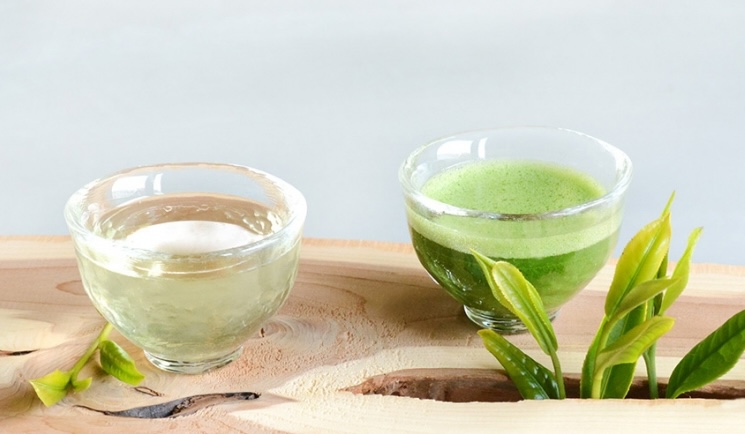Matcha demand skyrocketed in 2024, leaving manufacturers scrambling to keep up. As tencha supplies decreased, matcha became a coveted, hard-to-find treasure. Matcha is made of shaded and uniquely processed tea sprouts, so only tea leaves that have gone through this special process can be used for it. The stocks, however, are rapidly shrinking, meaning the tea world is buzzing with excitement for the new harvest to meet the soaring demand.
Let’s see when we can expect our favorites to return and why a little patience is required.

A brief guide to tea harvestING and processing
The timing of the harvest and the processing method are the two main factors that determine when a tea is ready to be released to the market—or, from our perspective, ready to drink.
Sazen mostly offers tea from the Kansai region, particularly from the famous Uji tea fields. While the weather may influence the timing, the harvest in Uji typically begins in late April with non-shaded tea leaves. Shaded teas, like tencha (used for matcha), need a few extra weeks to develop a sweeter, more aromatic flavor. At this time, tea manufacturers work day and night because the tea has to be processed quickly, right after the harvest. The processing of the tea varies depending on the type, and it’s generally divided into two stages: primary and secondary. Primary processing - like steaming, rolling (in case of loose tea), drying, frying - ensures the tea can be stored as aracha (which is the unrefined base ingredient of green tea). Secondary processing—such as sorting, cutting, blending, frying, and maturing—is aimed at enhancing the tea's quality. These carefully timed processes are what make tea such a special beverage. Teas made for competitions in particular often require the most time to reach their final, highest quality form.

What is Shincha and when to expect IT?
Shincha is the first released tea of the season, made entirely from the new tea harvest. In the Kansai region, tea is picked in late April or early May, and processed relatively lightly so we can enjoy the leaves' fresh, raw, and green aromas.
Shincha: The first shincha (sencha) is for the non-shaded shincha loose teas, and we can buy it from May. Most shincha is ready by the end of May, depending on the weather.
Shin-Matcha and Shincha Gyokuro: After shin-sencha comes shin-matcha and shincha gyokuro that are usually ready from the second half of May to early June. Higher-grade shin-matcha is released first, followed by lower-grade ones.
During the shincha season, we also enter a new phase. Around June, it is time to switch from the last year’s batch to the new year's one. That is when the New Teas are released.

New TeaS and THE timingS OF THEIR RELEASES
Unlike Shincha, which is a quickly and lightly processed green tea, the processing of New Teas takes longer and involves finalizing processes such as frying and maturing where tea can develop a more complex flavor. New Teas are made every year from the first harvest, aiming to recreate the same taste and aroma consistently, as crafted by the tea master (chajin). It is essential that it maintains the same quality and flavor each year. They are mostly made of the new harvest, but for the best flavor that can be the most loyal to the previous tea, they blend in a small ration of the previous year’s batch.
During June and July, all teas are transitioned from the previous year's batch to the new harvest, except for competitive-grade teas. These high-quality teas are typically sold starting in September, after the tea competitions are held.

What to expect from the 2025 Tea Harvest?
Tea farmers are expecting an exceptional harvest in 2025. Weather plays a huge role in tea quality, and so far, the Uji tea fields have been blessed with ideal conditions. Chilly and occasionally snowy mornings followed by sunny afternoons are perfect for growing tea, and this past season has delivered plenty of both. As misty spring mornings are essential for the best tea, everything so far points to an outstanding harvest.
What to expect NOW - in the next few months until the 2025 Shincha Season:
We have a few months to go with the 2024 harvest tea supplies. Kanbayashi Shunsho, Yamamasa Koyamaen, Hekisuien, and Hokoen have limited availability in small quantities. From their products, we have a determined monthly quota. We upload the teas to our website as we receive them, and they are available until stocks run out.
Kanbayashi Shunsho: Usually updated weekly. Available, in limited volumes.
Hokoen: Updated every two weeks. Sporadically available in a very limited quantity.
Hekisuien: Updated every two weeks. Sporadically available in a very limited quantity.
Yamamasa Koyamaen: Updated monthly. Sporadically available in a very limited quantity.

 Next >>
Next >>



